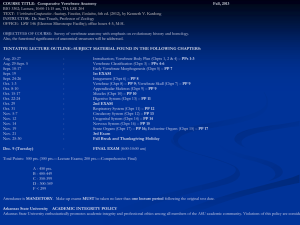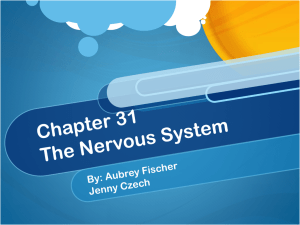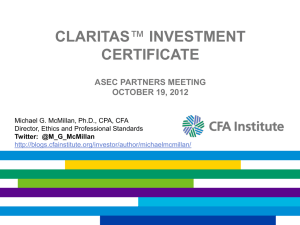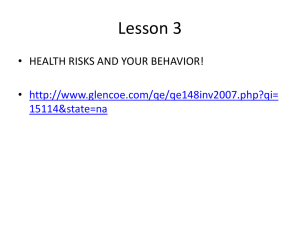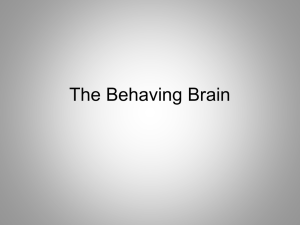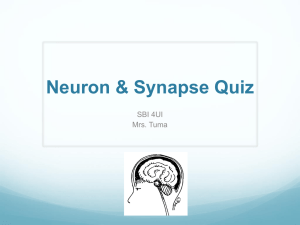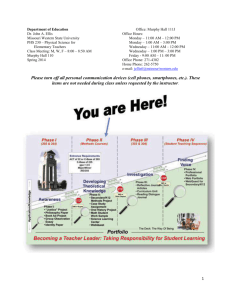Chapter 2 Week 1
advertisement
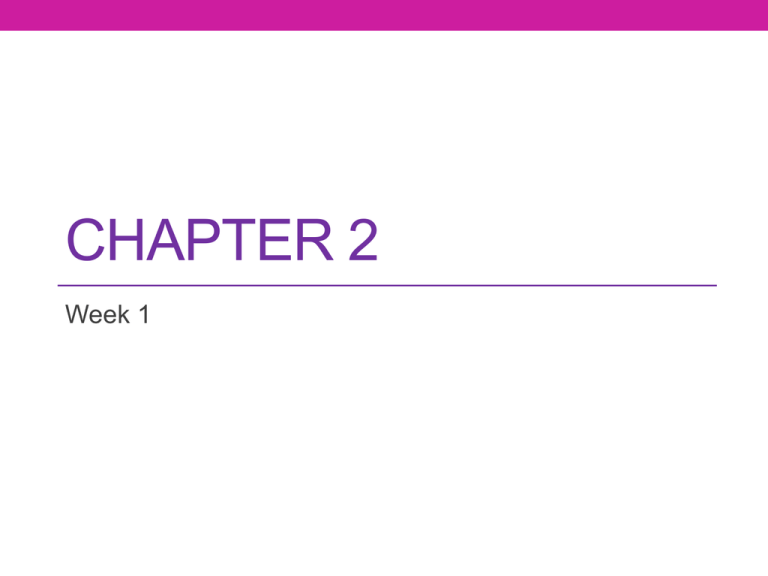
CHAPTER 2 Week 1 Homework for the Week • Monday 9/2 • Labor Day No School • Tuesday 9/3 • Chpt 2 52-57 • Block Day 9/4 & 9/5 • Chpt 2 58-63 • Study Vocab • Friday 9/6 • Chpt 2 64-68 • *Reminder: Friday is the last day to complete the Prologue & Chapter 1 test if a student had an excused absence Agenda: Tuesday 9/3/13 • Unit Overview • Edible Neuron Activity • Groups of 4 • Monday 9/2 • Labor Day No School • Tuesday 9/3 • Chpt 2 52-57 • Block Day 9/4 & 9/5 • Chpt 2 58-63 • Study Vocab • Friday 9/6 • Chpt 2 64-68 • *Reminder: Friday is the last day to complete the Prologue & Chapter 1 test if a student had an excused absence Unit Overview Essential Questions: Objectives • How do biological • Explain the process of neural processes relate to behavior? • How do the biological processes work to create and sustain behavior? • How does damage to a biological process or part affect behavior? • • • • • • communication. Explain how neurotransmitters work. Delineate the different steps of the neural chain. Analyze the difference between the neural and hormonal systems. Identify the parts of the brain and the functions of each. Describe the different types of brain scans. Determine the role of genetics in influencing human behavior. History of Mind Ancient Conceptions About Mind Plato correctly placed mind in the brain. However, his student Aristotle believed that mind was in the heart. Today we believe mind and brain are faces of the same coin. Everything that is psychological is simultaneously biological. Neural Communication Biological Psychology branch of psychology concerned with the links between biology and behavior some biological psychologists call themselves behavioral neuroscientists, neuropsychologists, behavior geneticists, physiological psychologists, or biopsychologists Phrenology (Franz Gall) Study of the bumps on your head Bumps reveal a person’s abilities and traits Phrenology Neural Communication We are a biopsychosocial system. Cellular Level (Interconnected Neurons) Ethnic Level (Culture) Organ Level (Brain) Group Level (Family) System Level (Information Processing) Individual Level (Human Being) Community Level (Society) Neural Communication Neurobiologists and other investigators understand that humans and animals operate similarly when processing information. Note the similarities in the above brain regions, which are all engaged in information processing. Neural Communication Neuron a nerve cell the basic building block of the nervous system Soma cell body; serves as neuron’s control center Neural Communication Dendrite the bushy, branching extensions of a neuron that receive messages and conduct impulses toward the cell body Axon the extension of a neuron, ending in branching terminal fibers, through which messages are sent to other neurons or to muscles or glands Myelin [MY-uh-lin] Sheath a layer of fatty cells segmentally encasing the fibers of many neurons enables vastly greater transmission speed of neutral impulses Neuron A nerve cell, or a neuron, consists of many different parts. Edible Neuron: Step 1 Motor neuron body • Pull n Peel twizzler, separate the individual strings halfway and tie knots at the end of each one. • What do these represent? • What do they do? Edible Neuron: Step 2 • 2 toothpicks, break in half • Place one half of the toothpick in the end of the twizzler that has not been separated. • Attach a gummy peach ring • Place a mini SweetTart in the center. • What does this represent? • What does it do? Edible Neuron: Step 3 • Stick the remaining toothpick pieces in to the cell body and attach sour gummies. • What does this represent? • What does it do? Edible Neuron: Step 4 • Wrap the sour belt around the axon. • What does this represent? • What does it do? Eat and Enjoy! • Practice at home: University of Utah, Mad, Mad Neuron • http://learn.genetics.utah.edu/content/addiction/reward/ madneuron.html Agenda: Block Day 9/4 & 9/5 • Review Homework pgs. 52-57 • Nervous System Activity • Reaction Time • Writing Instruction • Monday 9/2 • Labor Day No School • Tuesday 9/3 • Chpt 2 52-57 • Block Day 9/4 & 9/5 • Chpt 2 58-63 • Study Vocab • Friday 9/6 • Chpt 2 64-68 • *Reminder: Friday is the last day to complete the Prologue & Chapter 1 test if a student had an excused absence Homework Review: Pgs 52-57 (&50-51) • What is the action potential? • http://www.youtube.com/watch?v=ifD1YG07fB8 • What is the refractory period? Example? • What are neurotransmitters? • What is the difference between an agonist and an antagonist? • What is the difference between the central and peripheral nervous system? • What is the difference between the sympathetic and parasympathetic nervous system? Nervous System Activity: Trust Fall • For each of the scenarios on the following slide, think about what happens to each of the following: Nervous System Activity: Trust Fall • Trust Fall #1: Fall into the arms of another student with eyes open • Trust Fall #2: Fall into the arms of another student with eyes closed • Trust Fall #3: Fall into the arms of several students from an elevated height (standing on a chair) with eyes open • Trust Fall #4: Fall into the arms of several students from an elevated height (standing on a chair) with eyes closed Reaction Time Activity (HW preview) • 2 Volunteers: • Person A holds the ruler at the top • Person B has their fingers next to the ruler at the bottom. • Test #1 • Person A has a 5 second window to drop the ruler. Person B needs to catch the ruler once dropped. The distance up the ruler will determine reaction time. • Test #2 • Same Activity, dim the lights. Does this make a difference? • • • • • • • • • • • • • Distance Time 2 in (~5 cm) 0.10 sec (100 ms) 4 in (~10 cm) 0.14 sec (140 ms) 6 in (~15 cm) 0.17 sec (170 ms) 8 in (~20 cm) 0.20 sec (200 ms) 10 in (~25.5 cm)0.23 sec (230 ms) 12 in (~30.5 cm)0.25 sec (250 ms) 17 in (~43 cm) 0.30 sec (300 ms) 24 in (~61 cm) 0.35 sec (350 ms) 31 in (~79 cm) 0.40 sec (400 ms) 39 in (~99 cm) 0.45 sec (450 ms) 48 in (~123 cm) 0.50 sec (500 ms) 69 in (~175 cm) 0.60 sec (600 ms) Writing Instruction: Essay Prompt • Research Methods: Design an experiment that tests the hypothesis, “Cooperative learning is more effective in raising test scores than direct teacher instruction.” Use the following terms in your response: • Independent and dependent variables • Random sampling and assignment • Experimental and control grouping • Ethical considerations • An interpretation of what statistically significant results would mean for this experiment Writing Instruction: Rubric • Students must address the hypothesis given in the question. They cannot develop an experiment that does not address this hypothesis. • Points 1 & 2: Independent & Dependent Variables • Students must identify the variables correctly: • IV: type of teaching (cooperative learning vs. direct teacher instruction) • DV: increase in test scores • Points 3 & 4: Random sampling and assignment • Students must discuss ways in which they would conduct both random sampling (choosing participants from the population) and random assignment (assigning participants to groups). Any of the following ways can be used: • • • • • Random number generators Choosing every person from a list of all possible participants Drawing names from a hat Flipping a coin Etc. • NOTE: Students cannot mix up sampling and assignment. These are distinct procedures. They must talk about sampling and assignment separately to earn the points. Writing Instruction: Rubric • Points 5 & 6: Experimental and Control Groups • Students must describe the two groups in their experiment. The experimental group contains participants who experience the independent variable (cooperative learning). The control group contains participants who do not experience the independent variable (direct instruction). Students must correctly identify the distinct groups in order to receive both points (one group cannot be inferred through discussion of the other group). • NOTE: Students can discuss that there would be 3 groups – two experimental (one with cooperative learning, the other with direct instruction) and one control group (those who have a teacher who has not received training in either method). • Points 7 & 8: Ethical considerations • Students must identify at least two distinct ethical considerations they took into account when planning the experiment. Some options include (but are not limited to): • Informed consent (which includes knowledge that one is in the study and ability to leave study without penalty) • Informed consent/assent for minors • Debriefing • Institutional review (IRB) • Limiting/not using deceptive practices • Point 9: Interpretation of statistical significance • Students must explain what the phrase “statistical significance” means. Students must at least discuss that results that are significant are not due to chance (and therefore due to the independent variable). • NOTE: Students may not just discuss p-values at the .05 level without discussing what the p=.05 means. Agenda: Friday 9/6/13 • Vocab Quiz • Finish Writing Instruction • Build a Brain • Monday 9/2 • Labor Day No School • Tuesday 9/3 • Chpt 2 52-57 • Block Day 9/4 & 9/5 • Chpt 2 58-63 • Study Vocab • Friday 9/6 • Chpt 2 64-68 • *Reminder: Friday is the last day to complete the Prologue & Chapter 1 test if a student had an excused absence Vocab Quiz Structure • 60 seconds • Definition and a real world application • 10 terms, plus an additional “Life Line” • Synthesizer • One student will be given all of the terms. He/she will choose three terms to synthesize and connect together. Vocab Quiz Synthesizer Frames • Show Commonality: • ___________ , _____________ , and _____________ all demonstrate ____________ in the ____________ period. • Show Contrast: • Although ______________ in the case of ____________, for the most part ______________ as seen in the ______________ and the _____________. • Show Analysis: • ______________, ________________, and ______________ all resulted from _______________ in the ____________________ period.


